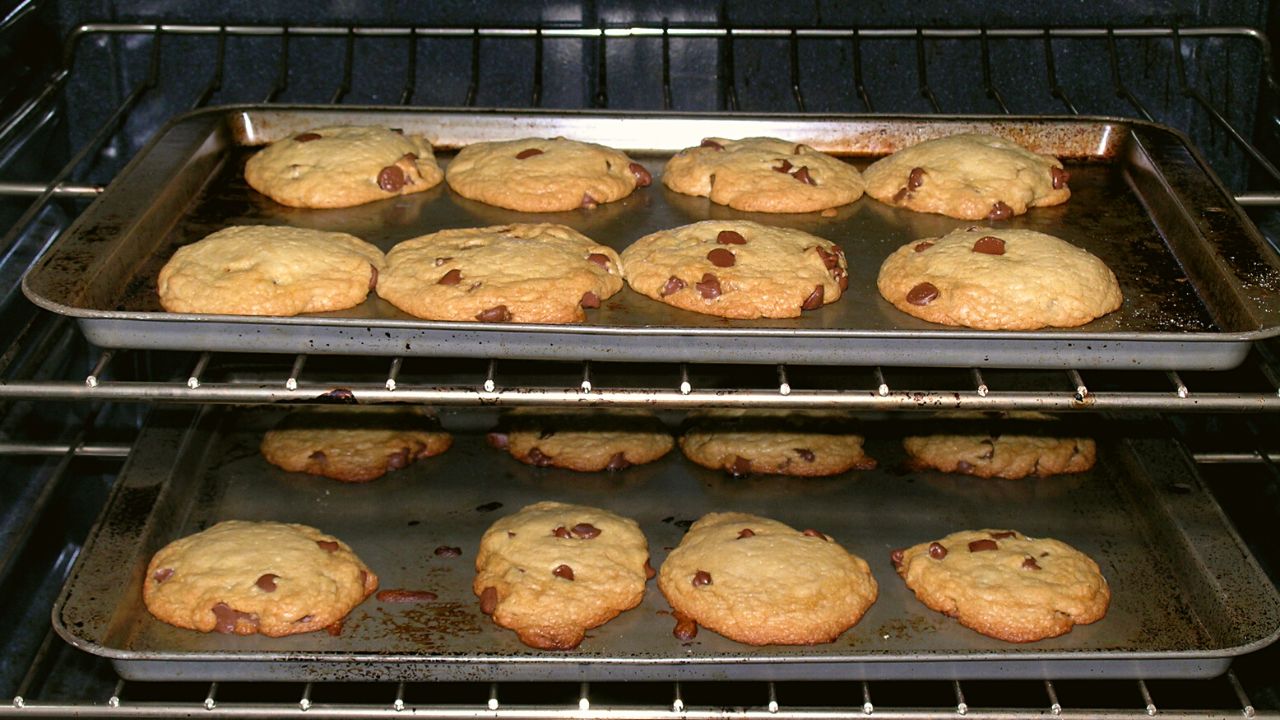Preparing a delicious batch of homemade cookies is an exciting experience and makes a perfect treat for the entire family. However, your whole experience could be ruined when your freshly baked cookies get stuck to the pan so that even a spatula can’t remove them in one piece.
In this article, I will cover some of the most effective ways how to bake cookies without sticking to the pan or a cookie sheet. You can use any of the tips and techniques below for most cookie recipes to prevent them from sticking.
1. Use Parchment Paper
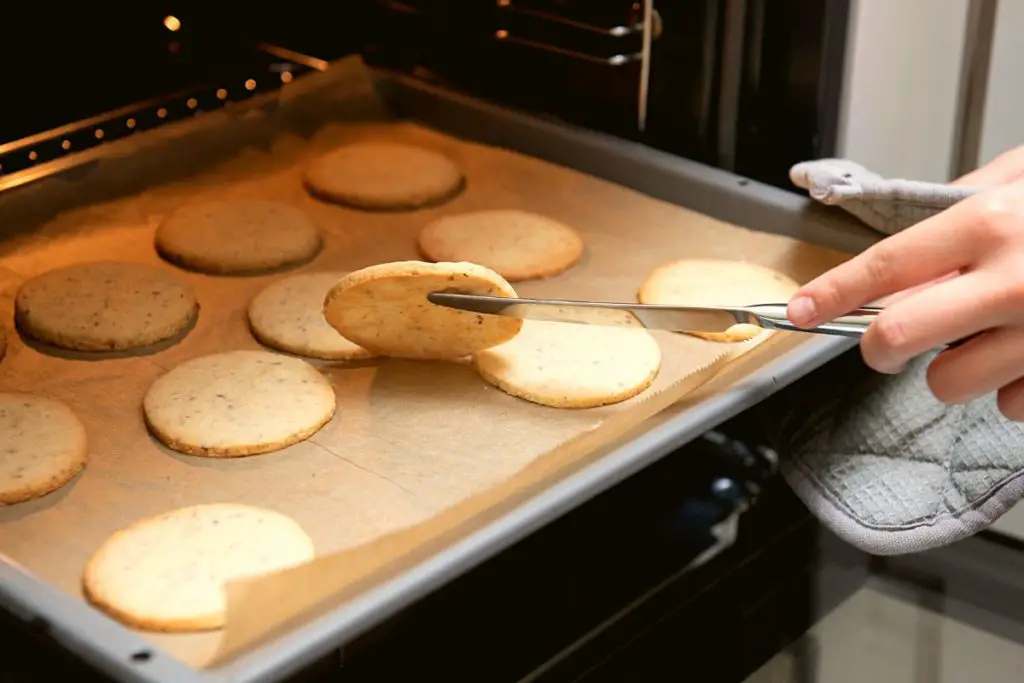
Using parchment paper, also known as baking paper, is the best way to bake cookies without sticking. It’s a non-stick, heat-resistant, grease, and moisture-resistant material that prevents cookies from sticking to baking sheets.
All you need to do is to line your baking tray with parchment paper and place your cookies on it. It’ll keep your cookie dough from sticking to the baking sheet. Its non-stick properties will let you easily remove the cookies from the pan after baking.
If the parchment paper is not heavily burnt or dirty it is still fine to reuse it for another batch.
Read Also: 10 Thin And Crispy Oatmeal Cookies (Top Recipes To Bake This Year).
2. Use Non-Stick Cooking Spray
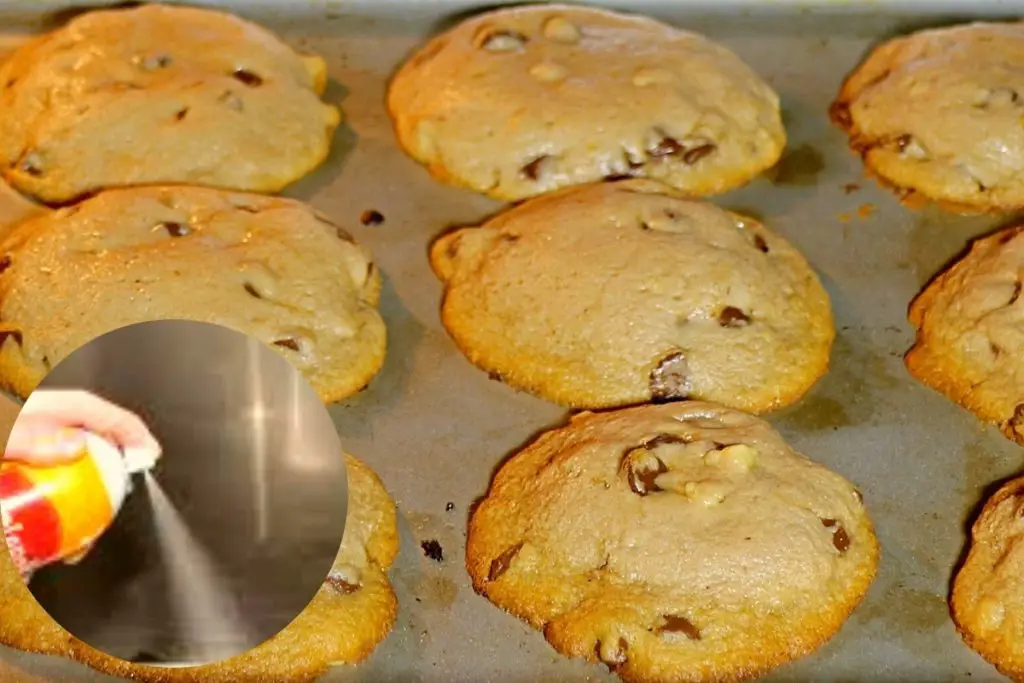
It’s also possible to bake cookies without parchment paper. You can use a non-stick cooking spray like Pam, Crisco, or Fry Light (UK) if you are planning to bake cookies directly on an aluminum or stainless steel baking sheet.
A greased pan will make sure that your cookies don’t stick to the baking pan. However, it’s important to make sure that you add an even layer of non-stick cooking spray so that just easy slide them off after baking.
If you’re planning to make more than one batch, respray the baking tray between each batch.
You can also treat a glass or ceramic casserole dish with the non-stick cooking spray if you don’t have a traditional aluminum baking sheet. However, you’ll need to keep in mind that glass is not a good heat conductor. It means you’ll need to bake your cookies about five to eight minutes longer than what your recipe calls for.
3. Grease Your Sheet Pan With Clarified Butter
Clarified butter, also known as ghee, has a higher smoke point than regular butter, which makes it perfect for use in a hot oven preventing cookies from sticking to the pan. To grease the baking pan with clarified butter, use kitchen paper to evenly cover the baking tray.
Check out the video below on how to easily make clarified butter at home.
You can use this heat-resistant, non-stick spread for all types of cooking and on different materials including silicone and aluminum pans.
4. Bake in a Silicone Tray
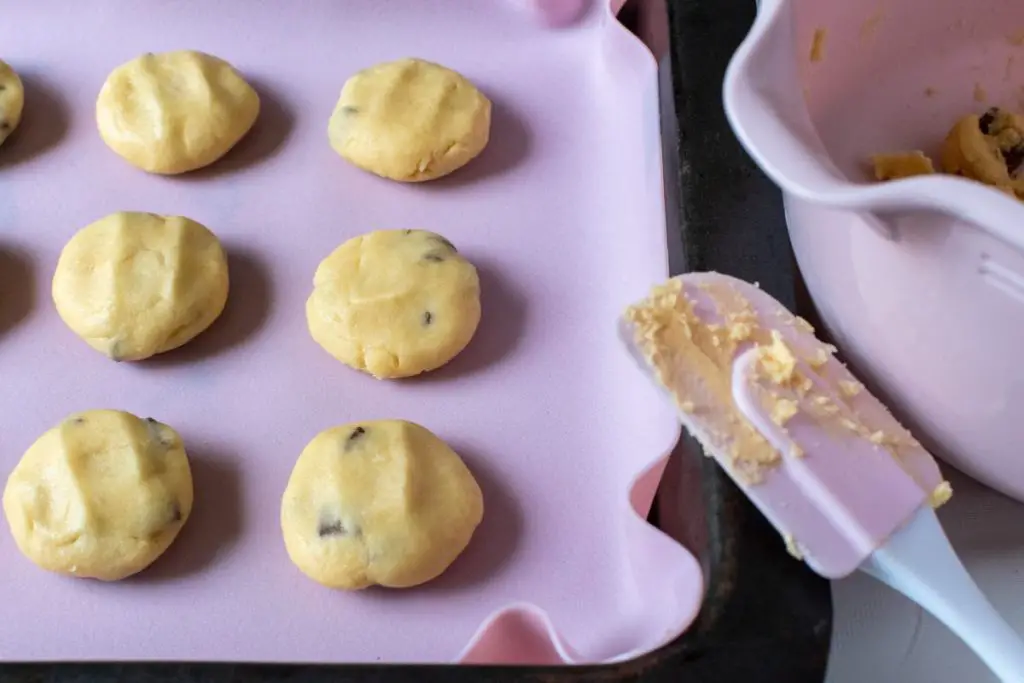
Using a silicone tray to bake cookies is another effective method to prevent sticking. While silicone cookware and trays feature non-stick capabilities, I recommend you use non-stick spray or clarified butter to grease it slightly for extra assurance.
I recommend you use a pastry brush or paper towel to apply clarified butter or oil to your silicon baking tray. It’ll allow you to cover the entire surface and corners effectively.
5. Use a Non-Stick Cast Iron Skillet
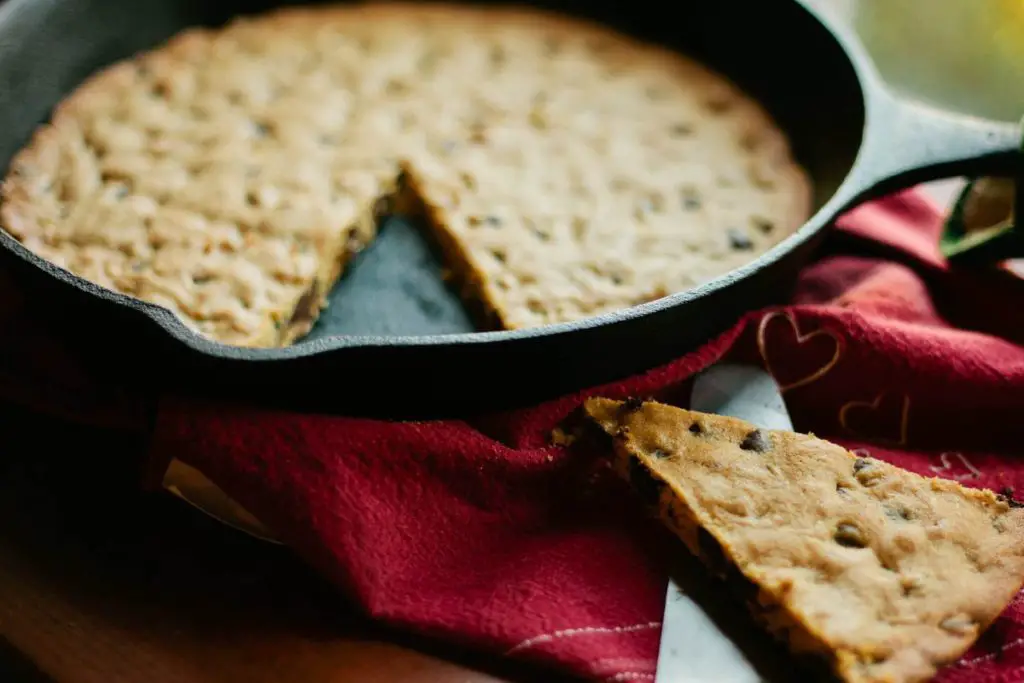
You can use a well-seasoned, naturally non-stick cast-iron skillet for baking homemade cookies as cast iron is a great heat conductor, it bakes evenly and consistently and is perfect if you want to bake a gain chocolate chip cookie.
However, you’ll need to make sure whether you can use it in your oven or not. That’s because not all stainless-steel skillets are oven safe as they have wooden or plastic handles that could melt in the hot oven.
While a cast-iron skillet is naturally non-stick, adding a layer of non-stick material like a round piece of parchment paper could make the cleaning up even easier.
The baking time will remain similar to an aluminum baking pan. But it’s wise to check the doneness of your cookies a couple of minutes earlier than the recipe’s time. Don’t forget to wear baking gloves while removing the skillet because its handle will be extremely hot.
6. Place a Silicone Mat
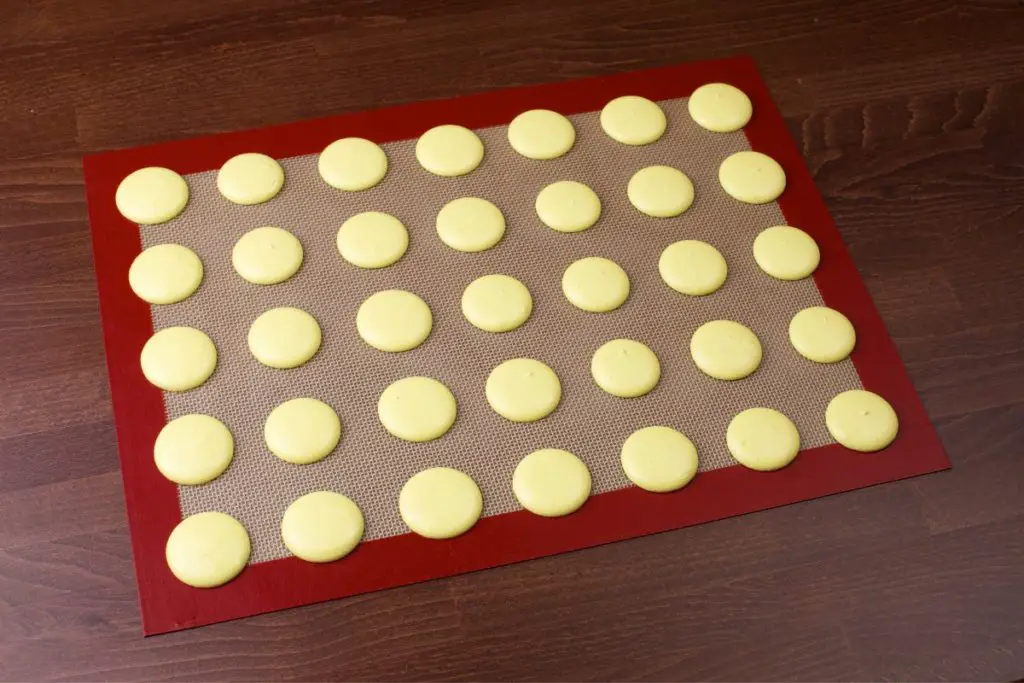
The best thing about silicone mats is that you can use them for years, unlike parchment paper, silicone baking mats can be used up to 3000 times if looked after properly.
They’re simple to use and easy to wash and clean. You can place a silicone mat on your baking sheet or straight onto the oven’s baking rack.
Not only will silicon mats keep your cookies from sticking but they’ll also ensure even baking. Because the silicone baking mat is so smooth, cookies placed on them can spread slightly more on them, producing, flatter, wider cookies, and biscuits than those baked on parchment. Also, their edges could brown more easily, giving you slightly crisper cookies.
7. Use Non-Stick Aluminum Foil

Using non-stick aluminum foil is yet another great method for baking cookies without worrying about sticking or dealing up afterward. You would already have this material in your pantry because of its versatility. This method will suit you best if you don’t want to use any oil or spray.
Just grab a cookie sheet and line it with aluminum foil, the dull side facing up, which is usually the non-stick side. Make sure that you press into the tray’s inner corners properly or if you are using a baking sheet you can fold it over the edges so it won’t slip off.
You can also use non-stick cooking spray to make the surface extra nonstick.
If you don’t have a baking sheet or tray, you can use aluminum foil straight on your oven rack. Check out the video below on how I bake my favorite sweet potato cookies just on aluminum foil.
Once your cookies are baked, you can simply dispose of the used foil. Similar to using the parchment paper, you won’t need to wash your tray after baking.
8. Always Preheat Your Oven
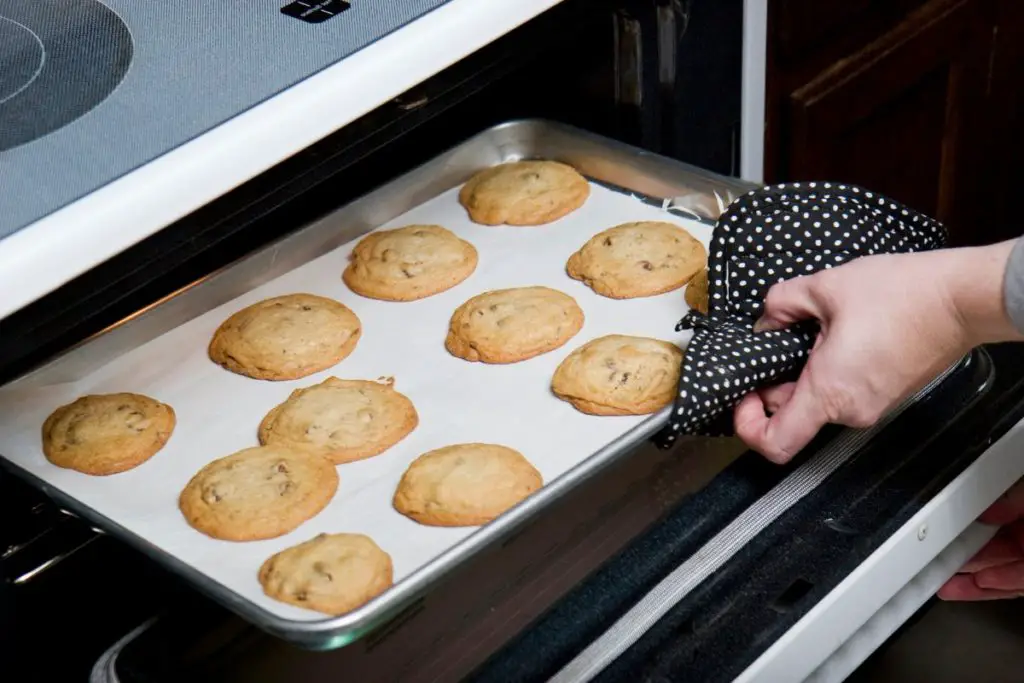
You should never place your cookie dough in your oven if it’s not pre-heated properly. It’ll ensure that your cookies are baked evenly and will also keep them from sticking.
If you don’t preheat the oven, your dough will take a longer time to bake. Additionally, the rising process will not take place effectively, cookies won’t bake and brown evenly, you will get a horrible texture and your cookies are more likely to stick to the baking tray.
Ideally, you should preheat your oven for at least 20 minutes before placing your dough in it. Although your oven should always be preheated to the right temperature, your baking tray should always be cold before you put the cookie dough on it.
9. Rotate the Baking Tray
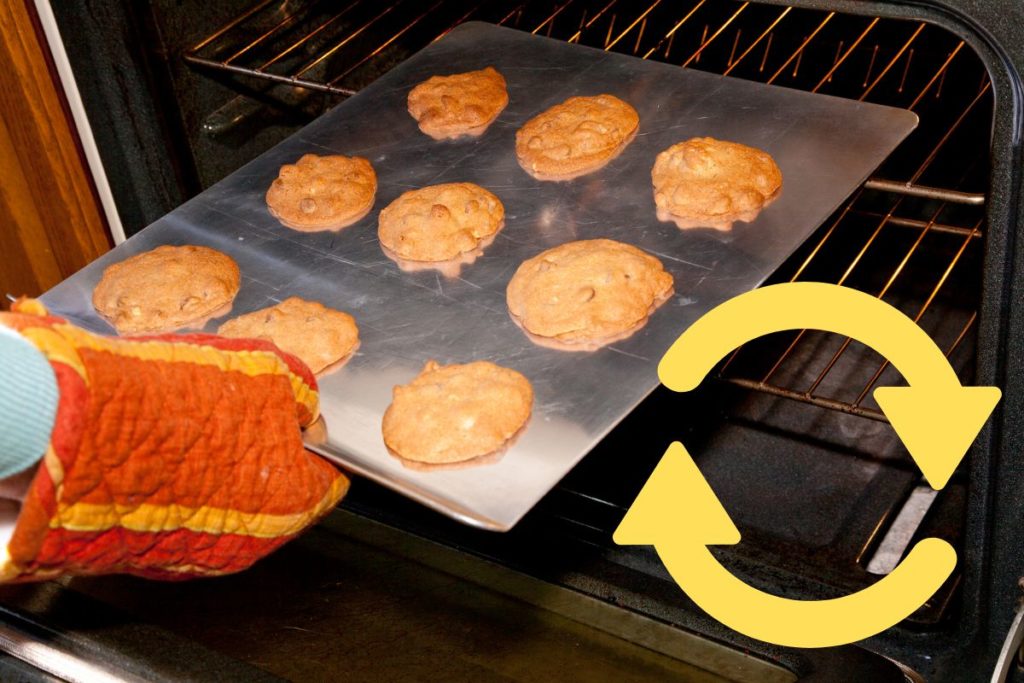
Most ovens have cold and hot spots and it causes uneven baking and browning. This phenomenon can also lead some of the cookies to stick to the baking sheet. If you are an avid baker you probably already know these little quirks that your oven has and if the rotating is needed.
I not, you should rotate your baking tray a couple of times during the baking process. It’s especially true if you’re using a big tray to bake a large number of cookies simultaneously.
Using this approach will allow you to make sure that all your cookies are baked evenly your cookies won’t burn and stick to the tray.
10. Don’t Leave The Cookies On The Baking Sheet For Too Long
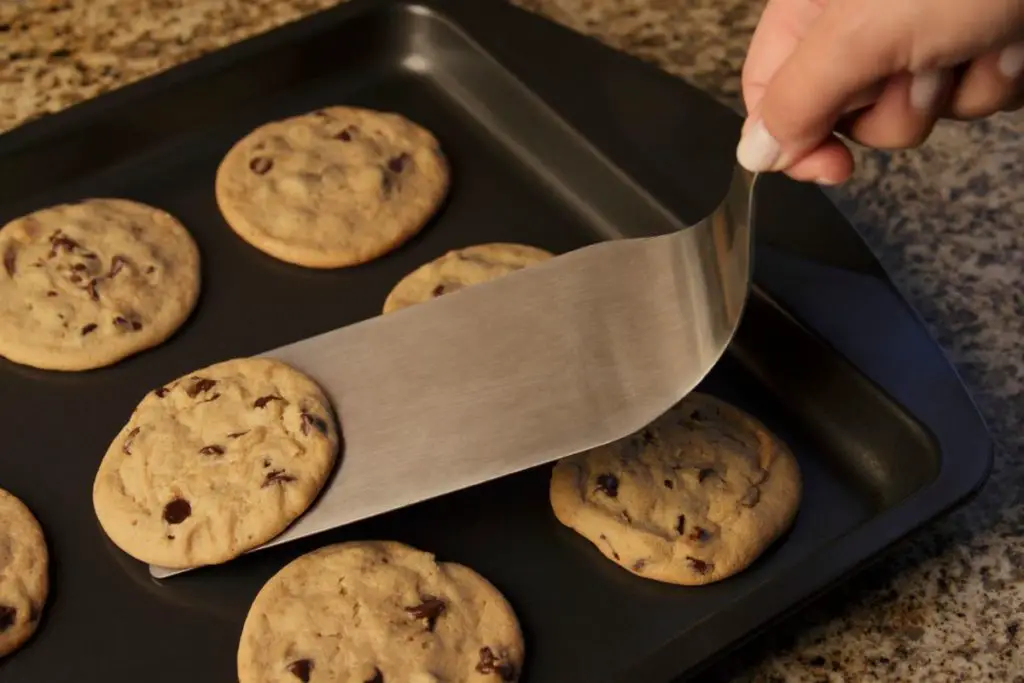
If you leave cookies to cool on the baking sheet for too long they could get stuck, if that happens put the cookies back in the warm oven for about 1-2 minutes till they warm up and get unstuck so you can easily remove them without breaking.
Final Words
The most common and effective way to keep your cookies from sticking to the baking sheet is to use the baker’s best friend, the parchment paper. It’s an affordable non-stick material that you can use with any type of baking sheet or tray. If you don’t have any, don’t worry, use aluminum foil or non-stick spray.
Happy Baking!
